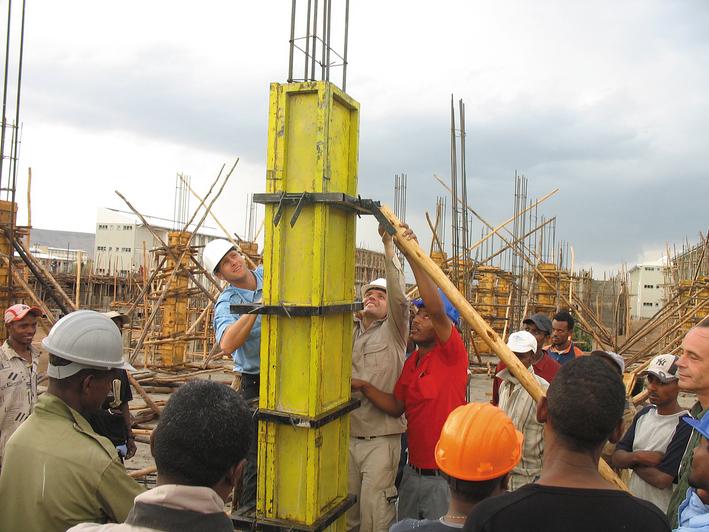Co-Processing of Waste Materials in the Cement Industry

© GIZ, Waste Materials
In a joint initiative the Deutsche Gesellschaft für Internationale Zusammenarbeit GmbH (GIZ) and Holcim Group Support LTD (Holcim) have developed Guidelines on Co-Processing Waste Materials in Cement Production which provide information on the use of waste material as an alternative resource for energy and material recovery in an environmentally sound manner. Additionally, GIZ and Holcim have developed and compiled a modular training kit designed to teach relevant staff from the public and private sector on the topic of co-processing. The training kit takes into consideration the specific framework conditions in emerging and developing countries and will enable participants to understand the benefits, risks and opportunities of co-processing as a contribution towards sustainable development.
Main features and components
Co-processing can reduce the consumption of primary fuels and raw materials by using energy and material values contained in waste streams. The use of alternative fuels and raw materials (AFR) in cement kilns can therefore decrease the environmental impacts of wastes, safely dispose of hazardous wastes, decrease greenhouse gas emissions, decrease waste handling costs and save money in the cement industry.
Co-processing requires capacity building on environmental, operational, legal, occupational health and safety, social and communication aspects.
The training targets are based on the requirements for capacity building as stipulated in the guidelines mentioned above such as:
- Formulation of waste management policies
- Formulation and interpretation of waste statistics
- Authorization and controlling of co-processing
- Assessment of new materials for co-processing and waste source qualification
- Monitoring of operation and transportation (methodologies of emission analysis and evaluation of analytical data)
- Management of occupational health and safety of the workers within the cement plant and during transportation
- Enforcement of the national regulations and permissions
- Systematic communication with stakeholders and the public
Implementation and work steps
The training kit consists of several practice-oriented modules. The modules contain slides for presentation, an accompanying textbook with instruction advice for the trainer and additional training material such as practical exercises, case studies etc. According to the requirements of the participants on capacity building, the most useful modules can be put together for specific training:
- Module 1: Introduction
- Module 2: Waste Management
- Module 3: Understand Cement Production
- Module 4: Application of Pre- and Co-Processing in Cement Production
- Module 5: Occupational Health and Safety
- Module 6: Legislation and Permitting
- Module 7: Corporate Social Responsibility and Communication
- Module 8: Life Cycle Thinking and Assessment for Waste Management and Co-processing
The first training package is aimed at public authorities at national, regional and local level and non-governmental organizations (NGOs) dealing with the issue of waste management and co-processing. At a later stage the target group could be extended to cement operators, waste handling companies and to waste generators.
Output
Participants will be able to apply different tools to implement and supervise co-processing successfully.
Downloads
Characteristics
Phase of intervention
Designing SIA, Technical infrastructure
Level of intervention
Company, Park management
Regions
Global
Countries
Chile, Mexico, Morocco, Philippines
Target groups
Company, SME, Industrial area management and operator, Local and international consultant and advisor, Municipality, Policy makers